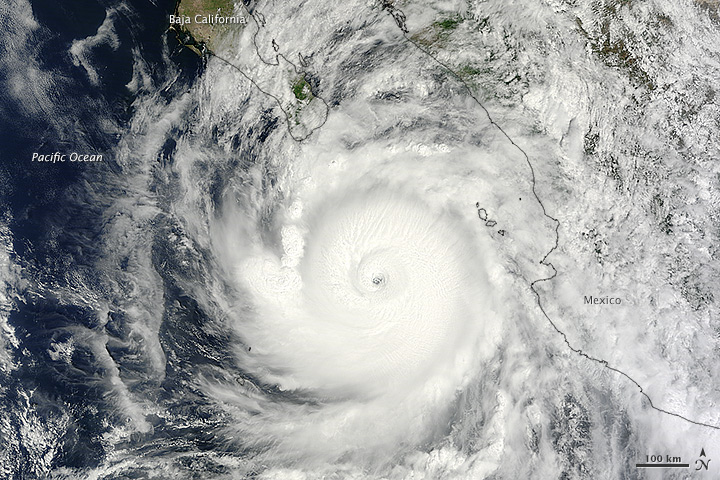In 2014, significant insured losses totaled approximately $33 billion, a dramatic drop compared to the historic insured losses seen in 2011, which totaled approximately $126 billion.
Guy Carpenter & Company, a global risk and reinsurance specialist and a wholly owned subsidiary of Marsh & McLennan Companies, released its annual Global Catastrophe Review, which reports that insured losses in 2014 were at the lowest level seen since 2009.
“Although insured losses for 2014 were among the lowest recorded in years, we still observed powerful impacts and significant losses from both natural and man-made catastrophes,” said James Waller, Ph.D, research meteorologist at GC Analytics. “Notable insured losses from around the globe included the 2014 February snowstorms in Japan, hail and windstorms in Europe, severe flooding in the United Kingdom and a cold, stormy winter in the eastern half of North America.”
Europe/Middle East/Africa
In total, insured losses in Europe, Africa, and the Middle East accounted for about 21 percent of global insured losses in 2014. Among the most notable events included the hail and windstorm Ela, which affected areas including Germany, France, Belgium and Austria and generated damaging wind gusts and hail in excess of seven centimeters (2.8 inches). Insured losses from this severe storm totaled around $2.8 billion.
An unusual number of moderate severity storms affected Western Europe during the winter months of 2014, with storms impacting coastal flooding and strong winds recorded across Ireland and Spain. The United Kingdom saw significant coastal erosion and widespread and persistent inland flooding, with December to January experiencing the highest rainfall totals since record keeping began in 1910. In the United Kingdom alone, insured losses are estimated around $1.8 billion.
Asia/Australasia
Asia and Australasia endured both natural and man-made catastrophes in 2014, accounting for 23 percent of estimated global insured losses in 2014. In the Northwest Pacific Basin, no new tropical cyclones developed in the month of August, which has not occurred in the last 60 years. Nevertheless, five tropical cyclones affected China throughout the year. The strongest of the five, Typhoon Rammasun, was the most impactful storm to hit the region since 1973, bringing heavy rainfall, flooding, and wind to China, Vietnam, and the Philippines. While the estimated insured losses from Rammasun totaled $250 million, the estimated economic impact is $4.6 billion. The most costly event affecting the Asia region, however, was a result of two significant snowstorms that hit Japan early in the year. The snowstorms accounted for $3.1 billion in insured losses, disrupted operations for a large number of businesses, and caused hundreds of thousands of power outages, as well as a number of fatalities and injuries.
Outside of natural catastrophes, 2014 also saw the disappearance of Malaysian Airlines Flight 370 in March, the loss of Malaysian Airlines Flight 17, which was shot down over Ukraine in July, and an AirAsia flight that crashed into the sea near Indonesia in late December.
Americas
The Americas comprised 57 percent of global losses in 2014, as compared to 48 percent in 2013. Arctic winter weather, hurricanes, earthquakes and convective outbreaks contributed to these insured losses.
In the U.S. and Canada, the frigid winter caused $2.3 billion in insured losses alone. Although the winter was not unprecedented, it is considered one of the coldest winters in the past 30 years across many states throughout the U.S. Additionally, considerable convective outbreaks spawned EF-3 and EF-4 tornadoes across the Southern United States, with later outbreaks causing severe hail storms across the Midwest. In spite of these instances of severe weather, hail reports in 2014 were below the 2005 to 2013 average. Earthquakes also played an important role in insured losses for the year, with magnitude 7.3 and 6.0 tremors present along the Nicaragua-Ela Salvador border and in the Napa Valley of California, respectively.

The North Atlantic Basin experienced six hurricanes in 2014, one of which hit the mainland of North America. In the East Pacific, 2014 was the most active hurricane year since 1992, with 16 hurricanes total and nine major hurricanes affecting the region. The most impactful hurricane of the season, Odile, struck the Baja Peninsula of Mexico and caused an estimated $1.6 billion in insured losses. Notably, tropical storm Iselle made landfall on the Big Island of Hawaii, the first time this has happened in more than 50 years. Meanwhile, Hurricanes Fay and Gonzalo gave no respite to Bermuda, downing trees and power lines across the island in quick succession.
“Though the eye of Hurricane Gonzalo passed directly over Bermuda, exceptional damage was offset in part due to the area’s resilient building codes,” said Waller. “Although 2014 was a relatively quiet year for catastrophes, events such as Odile and Gonzalo reaffirm the importance of continued education and the implementation of innovative risk management strategies to mitigate the losses experienced from a catastrophe.”
Source: Guy Carpenter & Company LLC
Was this article valuable?
Here are more articles you may enjoy.


 California Again Delays Wildfire Protection Rules for Homes
California Again Delays Wildfire Protection Rules for Homes  Tricolor Trustee Plans to Sue Founder for Auto Dealer’s Collapse
Tricolor Trustee Plans to Sue Founder for Auto Dealer’s Collapse  Atmospheric River to Flood Pacific Northwest Through Week
Atmospheric River to Flood Pacific Northwest Through Week  NYT, Chicago Tribune Sue Perplexity AI as Copyright War Rages On
NYT, Chicago Tribune Sue Perplexity AI as Copyright War Rages On 